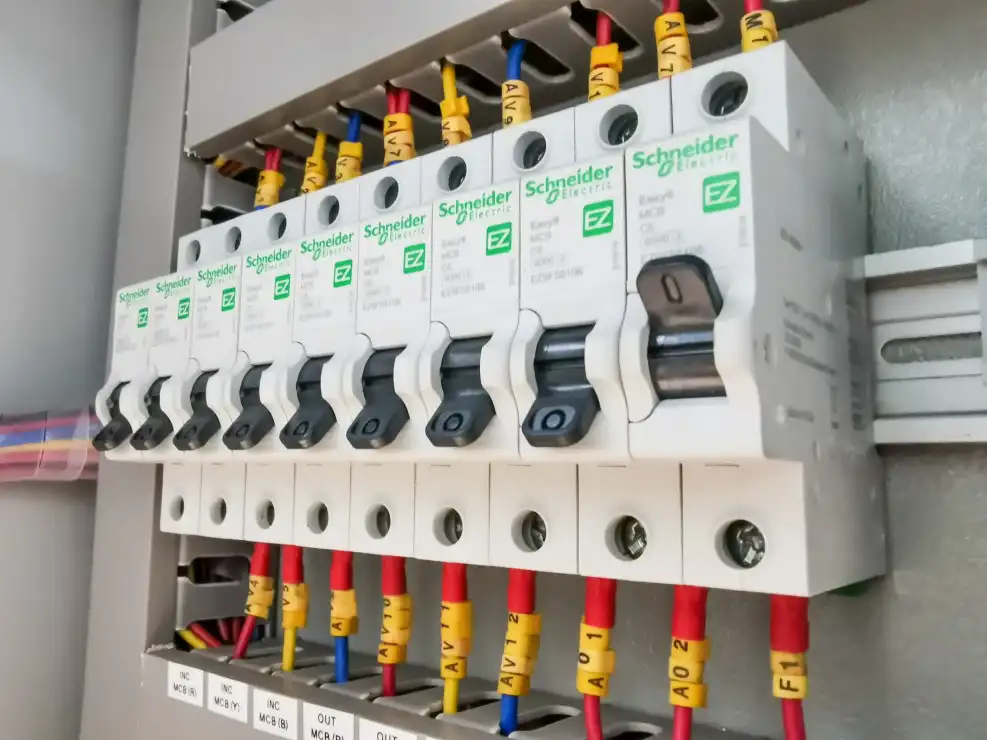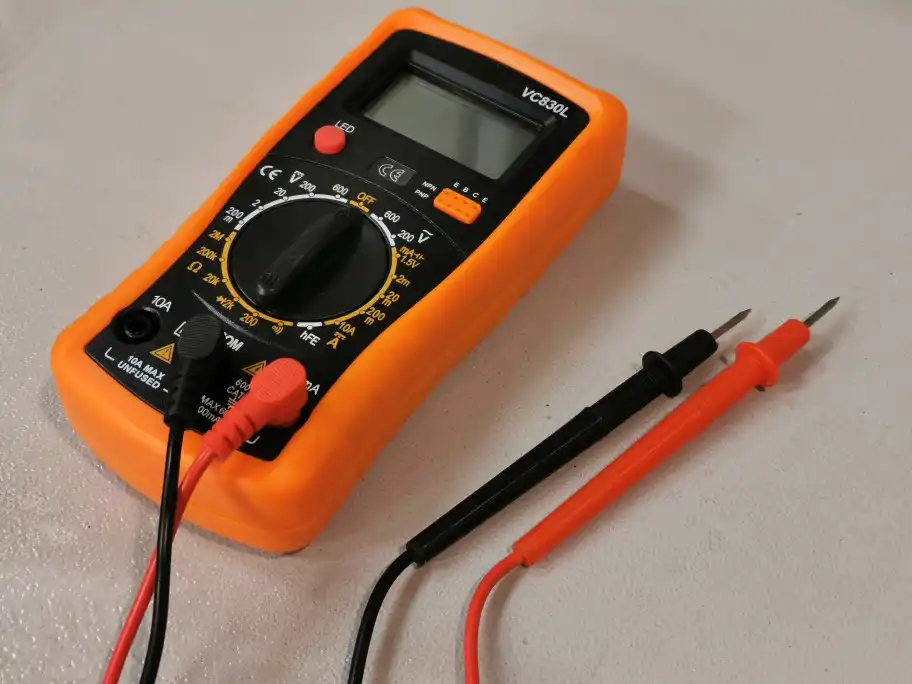Lathe machines have enormous appetites. They use their fair share of electricity the instant you switch them on. As a result, while feeding your power equipment, you may have tripped a few circuit breakers in your shop. It’s better to check the wiring to ensure you have enough electricity for your hungry power tools.
Check the nameplate on the tool’s body or motor housing to see how much they need. Look for AMPS and VOLTS information. Make a list of how many amps each tool uses. Make a note of any devices you can connect to run on 240 volts rather than 120 volts. Small power tools (sanders, jigsaws, etc.) often need 2 to 8 amps. 6 to 16 amps is standard for more extensive power tools (router, circular saw, table saw, lathe, etc). For example, dust collectors and air compressors may need much more electricity.

How much power does a CNC machine need?
If the machining time is half an hour and the feed rate is 500 mm/min, the power usage is 0.5 hr X 14.4 kWh = 7.2 kWh. If we utilize a 1500 mm/min feed rate, the machining time is 10 minutes, and the power usage is 3 kWh.
Should I rewire it to 240 volts?
The use of amperage is cut in half when the voltage is doubled from 120 to 240 volts. And this means you may run a 14-amp table saw and a 12-amp dust collection at 13 amps instead of 26 amps, allowing you to use the same 20-amp, 240-volt circuit for both tools. When exceeding your power limits, don’t forget about non-tool equipment in your business, like lights and heaters.
Contrary to popular misconception, using 240 volts instead of 120 volts does not make a power tool more potent because the amp use is decreased in half while the wattage remains the same. For example, a 16-amp power tool on a 120-volt circuit consumes 1,920 watts (16×120=1,920). On a 240-volt circuit, the same device now draws eight amps and burns 1,920 watts (8×240=1,920).
You might notice a power differential using an 18-amp tool on a 20-amp circuit. Switching to 240 volts reduces the load to 9 amps out of 20, ensuring that the motor continues to run at full power. Rewiring your home or shop should be left to a professional unless you’re a trained electrician conversant with local construction requirements.
Do I have enough power to use?
100- to 200-amp service is standard in most homes built in the previous 40 years. And this should be plenty to power a modern home and a store. Consider having a subpanel installed in your shop so you don’t have to share circuits with your home. And this also allows for shorter wiring, which reduces power loss and heat buildup and the ability to turn off the shop’s electricity when it’s not in use.
You probably only get 60-amp service if your house is from the 1950s and you haven’t made any electrical upgrades. It would help if you had your service expanded and a new panel installed to avoid tripping breakers when operating power.

How is a lathe powered?
The power source in most modern lathes is an inbuilt electric motor, usually located in the headstock, to the left, or hidden in the stand below the headstock. The headstock frequently incorporates elements that transform the motor speed into various spindle speeds and the spindle and its bearings.
How can we measure the energy consumed during machining on a traditional lathe machine?
You can calculate the power needed for this procedure by multiplying Fc (cutting force) * cutting velocity (Vc) by the time it takes to manufacture your entire task. And this is the amount of energy used. Power cells also measure the spindle power necessary to machine a specific job. Using this information and the machining time, you may calculate the energy expended for this process.
The specific cutting energy is a more precise word for determining the energy demand of any typical machining process. (i.e., the amount of energy used to machine a unit of material). The process’s power and MRR (material removal rate) are used to compute this.
You can also make use of the following:
Use a stopwatch and a power meter. Multiply cutting power (as determined by the power meter) by cutting time (measured by the stopwatch).
Make use of a three-axis cutting force dynamometer. Calculate the three cutting force components and multiply the main cutting force by the speed/velocity of the blade. And this will provide the cutting ability. Cutting energy is calculated by multiplying cutting power by machining time. On the other hand, cutting force dynamometers are more expensive than power meters.
Use an old-fashioned three-phase wattmeter. Such watt-meters directly measure phase currents, phase voltage, and power factor and provide the motor’s power draw. You may also measure the cutting power with such a watt-meter.
If you don’t have a watt-meter, consider utilizing ammeters to measure the phase currents. Separately measure the phase voltage. Assume a three-phase induction motor has a power factor of 0. (typical engines used in a conventional center lathe). You can then compute the cutting energy. And this will also show you how vital cutting power is.
A lathe uses what kind of motor?
Modern lathes are powered by an electric motor built within the machine. You can frequently see this component in the headstock. The size of the lathe usually determines the type of motor used. Small fractional motors (1/8, 1/4) and horsepower ac motors run on domestic single-phase power are widespread.
What is the horsepower of a lathe?
You can revolve a 12′′ diameter with a six-inch lathe. This lathe can generally support a 1/2 to 1 hp motor with various pulley locations to vary the’ leverage. On the other hand, a sizable bowl-turning lathe requires at least a two-horsepower motor and, in some cases, a three-horsepower motor.
What is a power-saving system for the lathe?
Regular systems are ideal over energy-saving ones. As a result, an electronic A.C. motor speed controller can be used in the lathe to save energy. Constant speed A.C. motors are suited for various applications in most equipment. Overloading, line voltage variations in the input supply, over-voltage, frequency shifts, surge difficulties, and other factors cause speed variations. You can mitigate this by employing an AC engine speed controller.
These difficulties may result in inadequate motor speed regulation and reduced potency. An electrical device helps maintain the motor’s speed uniformity to circumvent these problems. An electronic control unit is essential to address the concerns mentioned above. The A.C. motor’s speed control is necessary to ensure automatic speed regulation regardless of load situations.
Sources Used
https://mrelectric.com/blog/power-tools-how-much-power-do-they-need
https://www.model-engineer.co.uk/forums/postings.asp?th=122127
https://app.aws.org/forum/topic_show.pl?tid=28321
https://www.wisc-online.com/LearningContent/mtl10502/Mlt10502.htm
https://journals.sagepub.com/doi/full/10.1177/1687814016680737
- Grain and Sheen: Teak Oil versus Danish Oil Uncovered - January 10, 2024
- The Cherry on Top: Crafting the Perfect Cutting Board - January 9, 2024
- Polyurethane Water-Based vs Oil-Based: Choosing the Right Finish - January 8, 2024
